THE EXCELSIOR PRESS MUSEUM PRINT SHOP AND
RESTORATION FACILITY

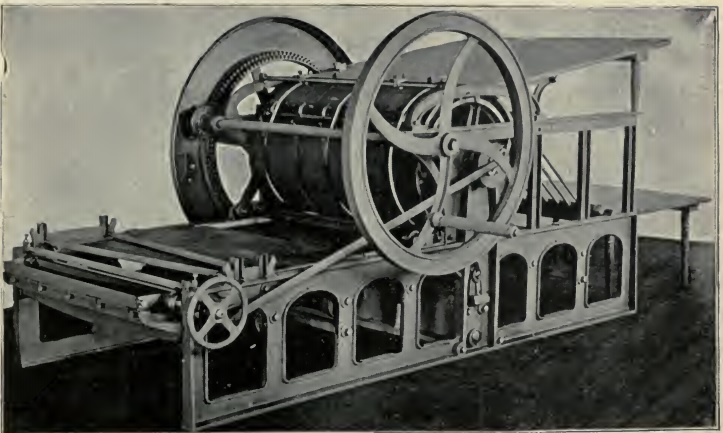 Newspaper
& Book Presses Newspaper
& Book Presses
of the 19th Century
Cylinder
Presses of 1867-97
and
Bed - and - Platen
Presses 1830 -
From an 1897 Type Foundry
Catalog
~~~~~~~~~~
In 1897, Cleveland Type Foundry listed the
Campbell Country Press as one of the newspaper
presses they sold. The text below the image
indicates that this press had been in use for
"more than thirty years".
That would suggest that this press could would
have been an option beginning in 1867, but
similar presses from other manufacturers might
well have been in use as early as 1840.
This is a hand-fed, hand-cranked press. The
bed moves back and forth beneath the cylinder,
which rotates in one direction and lays the
printed sheet on the delivery board (beneath
the feed board) after it is printed. The long
fingers shown in the bottom right would slip
under the printed sheet as the impression
cylinder rotated and would rotate
up to support sheet and lay it onto the
delivery board for stacking and drying.
This press is equipped with a hand crank, but
can also be driven via line shaft or other
means. Later installations may have used a gas
or steam engine to drive it; and, when they
became available, an electric motor.
This is a very basic, simple press; easy to
replicate and "pretty much" period accurate
circa 1850.
These presses did dominate in smaller
newspaper offices well into the 20th century
and can still be seen in operation in some
museum printing shop exhibits.


Cincinnati
Cylinder Press circa 1870
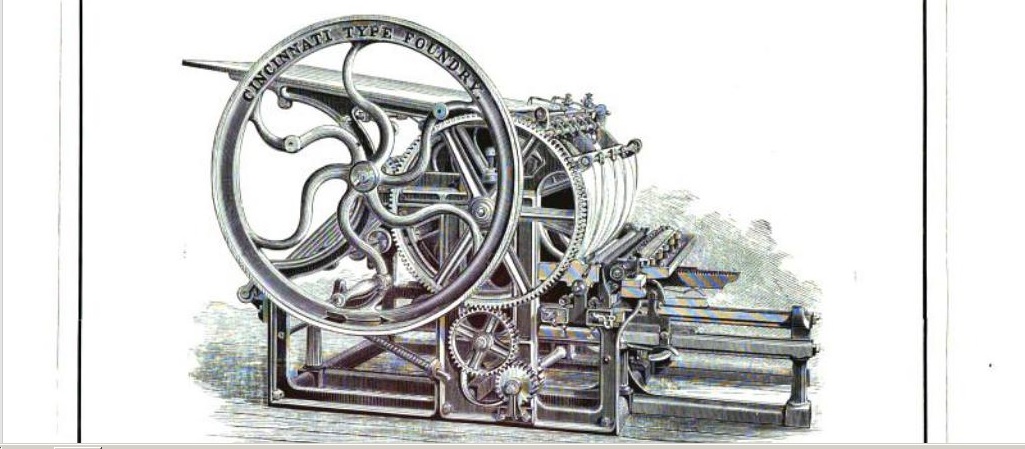
This Press was made by the Cincinatti Type
Foundry and sold under their name in their 1870
Catalog
CTF Claimed that this press would print 700-1000
sheets/hour or 10-15 rpm
These presses came in a variety of bed sizes
that could handle forms from 24x36 to 30x48"
A
NOTE ABOUT PRESSES USED IN DIFFERENT SHOPS
It is also important to note that these are only
a few of the many presses used to print books
and newspapers during the 19th century. More
advanced presses had been made, but sold only to
the largest big-city newspapers, while most
smaller newspapers in the country were printed
on presses such as these.
These presses were also used for printing more
than books and newspapers. They were also
considered "Job" presses - used for printing
various commerical printing jobs - posters,
calendars, anything that needed to be printed
and was to large for the common hand-fed platen
press to handle.
An interesting note in this regard is the
Washington Hand Press currently on display that
the Holcome-Jimison Farmstead Museum in
Lambertville, NJ. It was used to print the
weekly Milford (NJ) Leader. That old hand-fed,
hand-inked, hand-pulled Iron Hand Press was used
to print the small town's weekly newspaper until
1949 - nearly 100 years after others considered
this style press to be "obsolete". It wasn't.
Old presses run for a long time....
Washington
Hand Press on display at the Hunterdon County
Demorcrat
Bed - and -
Platen Presses
Although the Flatbed Cylinder style presses did
become dominant after 1850, prior to that, the
transition from Wooden Common Press to Iron Hand
Press to Flatbed Cylinder Press included a less
well-known design - the Bed and Platen Press. On
this style press, the older Iron Hand Press
style platen was incorporated to make the
impression and the sheets were hand-fed into a
powered system. That power could come from
leather-belted Line Shafts as seen in the images
below or by a steam or gasoline engine. These
presses could produce up to 1000 impressions per
hour while maintaining the image quality of the
older style Iron Hand Press, which the flatbed
cylinder presses of the era could not.
Gleason's
Magazine Press Room circa 1852
(image
identified by printing historian John
Archibald)
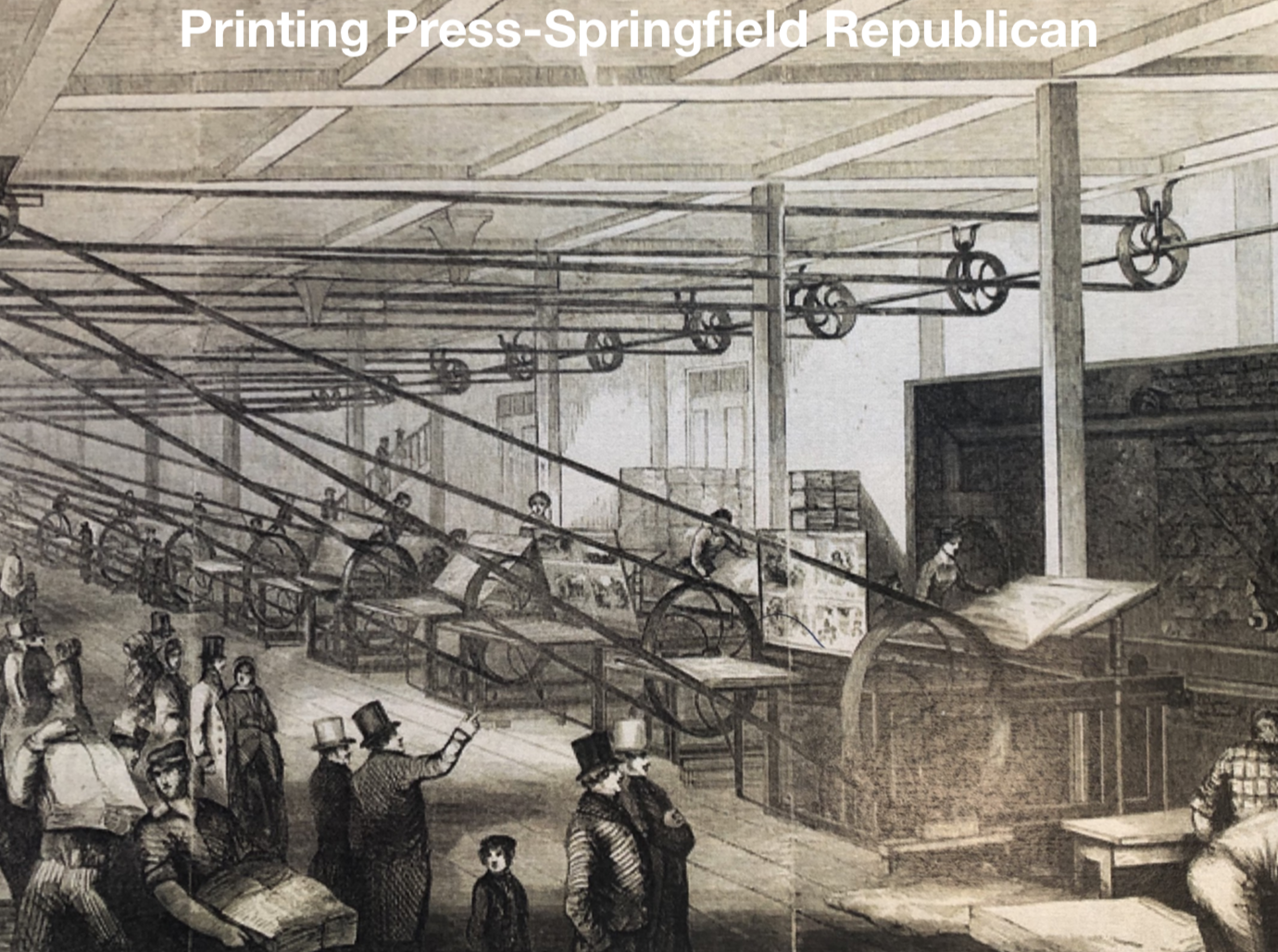
The presses shown above - as can also be seen in
the photo below appear to illustrate not the
more familiar flatbed cylinder presses, but
appear to be "Bed
- and - Platen" presses which were
actually more popular for quality printing
during the early 19th century.
These presses were powered, but continued to use
the older style platen for impression, rather
than the cylinders that became more popular
after they were improved after 1850.
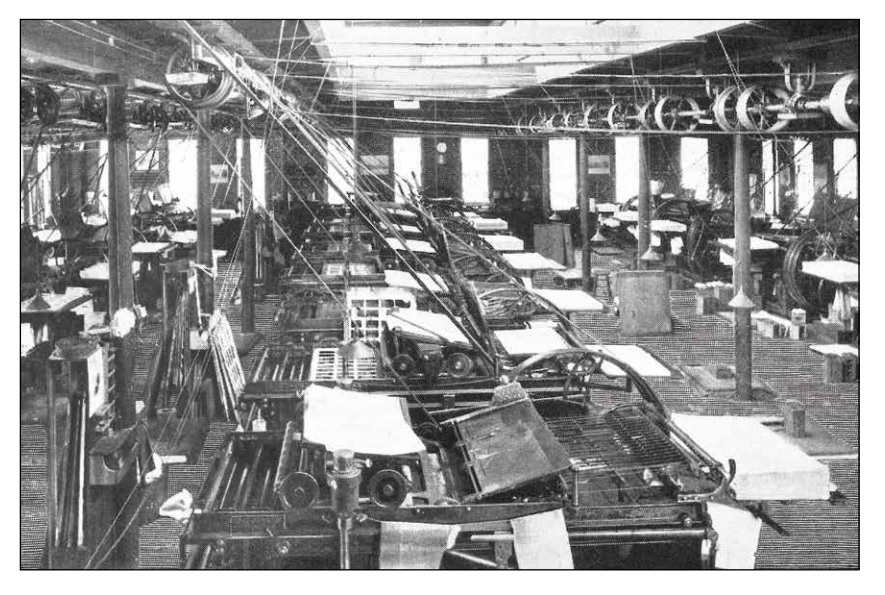
Bed - and
- Platen Presses in Press Room
(location
and year unknown)
photo taken
from
BED & PLATEN Book Printing
Machines
A technical study by
Douglas
W. Charles
with a
foreword by
Stephen O. Saxe
"American and British streams of ingenious
regression in the
quest for print quality"
published
MMXVII by PLANE SURFACE PRESS
~~~~~~~~~~~
See more about of Bed-n-Platen Printing Machines
at
GalleyRack.com
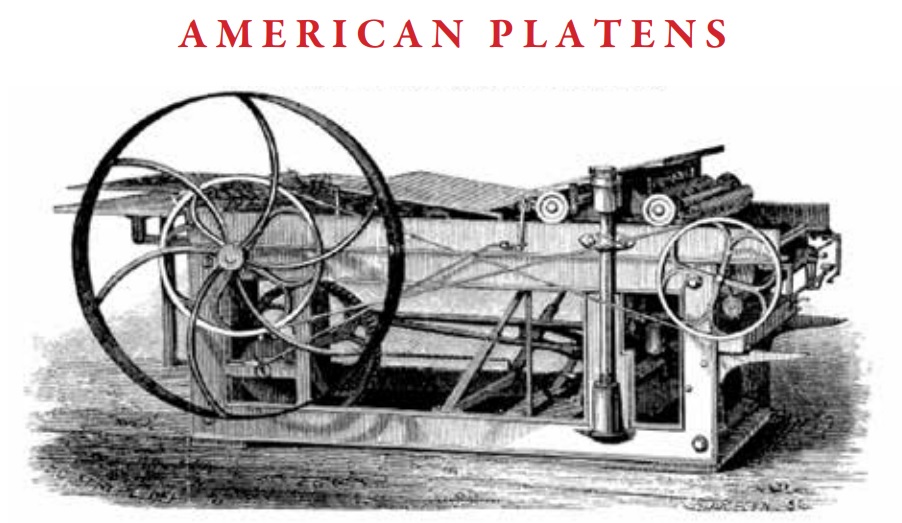
Adams
Single Feed Bed-and-Platen Press as
advertized in 1856
This is more likely the press shown in the
photo and drawing above. This is the press
more likely to have been used at the
Springfield Republican in 1840.
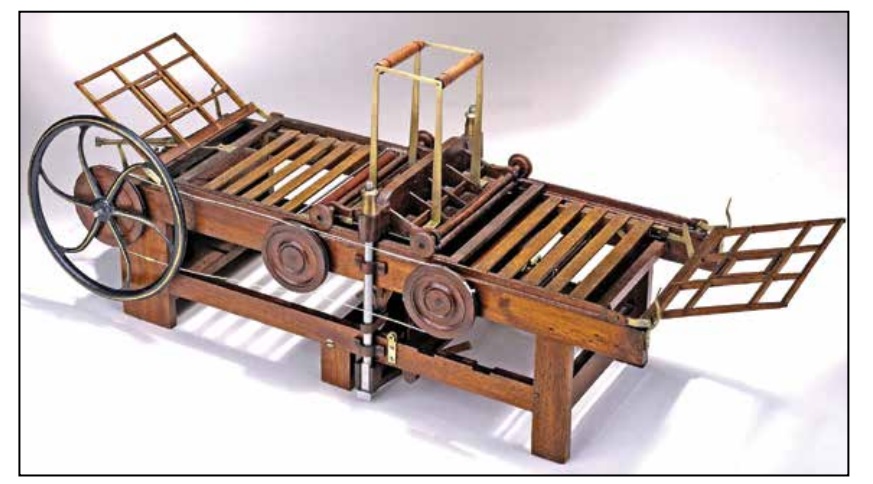
Patent
Model of Adam's Two-feed Bed and Platen
Press
note the old style iron platen in the center.
This press was designed for two sheet feeders to
operate from opposite ends of the press, with
sheets being transported to beneath the platen
to make the impression. The single-feed Bed
-and- Platen design - as seen in the
advertisement above - was shorter and designed
to be operated by a single feeder. In other
words, "half" of the press shown in the patent
model photo.
Inking was accomplished automatically - using
glycerine or leather-covered rollers rather than
the old style Ink Balls used on the
hand-operated horizontal platen presses -
whether Wooden Common Press design or the later
Iron Hand Press Design.
The Bed -and- Platen design greatly improved
production without losing the image quality that
the Iron Hand Presses were known for. By 1860,
designers of Flatbed Cylinder Presses were able
to accomplish the improved image quality
formerly only available with a fixed platen
design.
And, while many Flatbed Cylinder presses have
survived into the 21st century, few, if any of
the Bed -and-platen design appear to exist
outside of books and museums.
|
Acknowledgements: The
information I have assembled on this page began with
the identification by John Archibald who recognized the
image as being a scene at Gleason's magazine's
publishing house, dated 1852.
And then Michael Hurley
identified the odd-looking presses in the image as "Bed-and-Platen presses"
and passed on a link to a book about these presses
by Douglas
Charles, with a forward by Stephen Saxe.
The book is hosted by Dave MacMillian at
Circuitous Route
on his Galleyrack
server - http://www.galleyrack.com/images/artifice/letters/press/presses/charles-bed-and-platen-onscreen.pdf,
where I was able to read the entire book and also
found the undated photograph shown above.
However, from reading Stephen Saxe' forward, I learned
that these presses continued to be in operation for
fine printing of quality books and magazines as late
as the end of the 19th century, when they mysteriously
disappeared as the flatbed cylinder presses improved
to the point of outperforming the bed-and-platen
presses both in productivity while matching their
quality of inking and register.
No operational
bed-and-platen press is now known to exist.
And this is odd, because nearly all presses in
printing's history have left at a few examples
somewhere in the world. I still operate presses that
are well over 100 years old, and an old Washington
Hand Press was used to print a local newspaper until
1949. But still, no Bed-and-Platen presses are known
to exist in 2019.
In any case, we could NOT have compiled this
information without the advice and recommendations of
other printers who know more than I do about these
presses' histories.
We are grateful for
their advice and support.
~~~~~~~~~~~~~~~~~~~~~~~~~~~~~~~~~~~~~~~~~~~~
Please contact Alan Runfeldt with other
questions
contact
page
last updated Nov, December 2019
|







